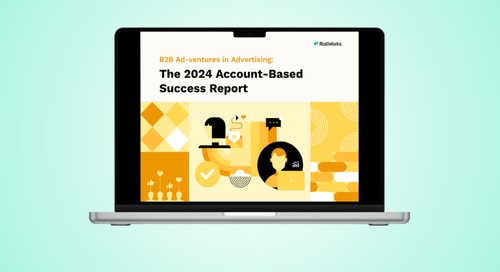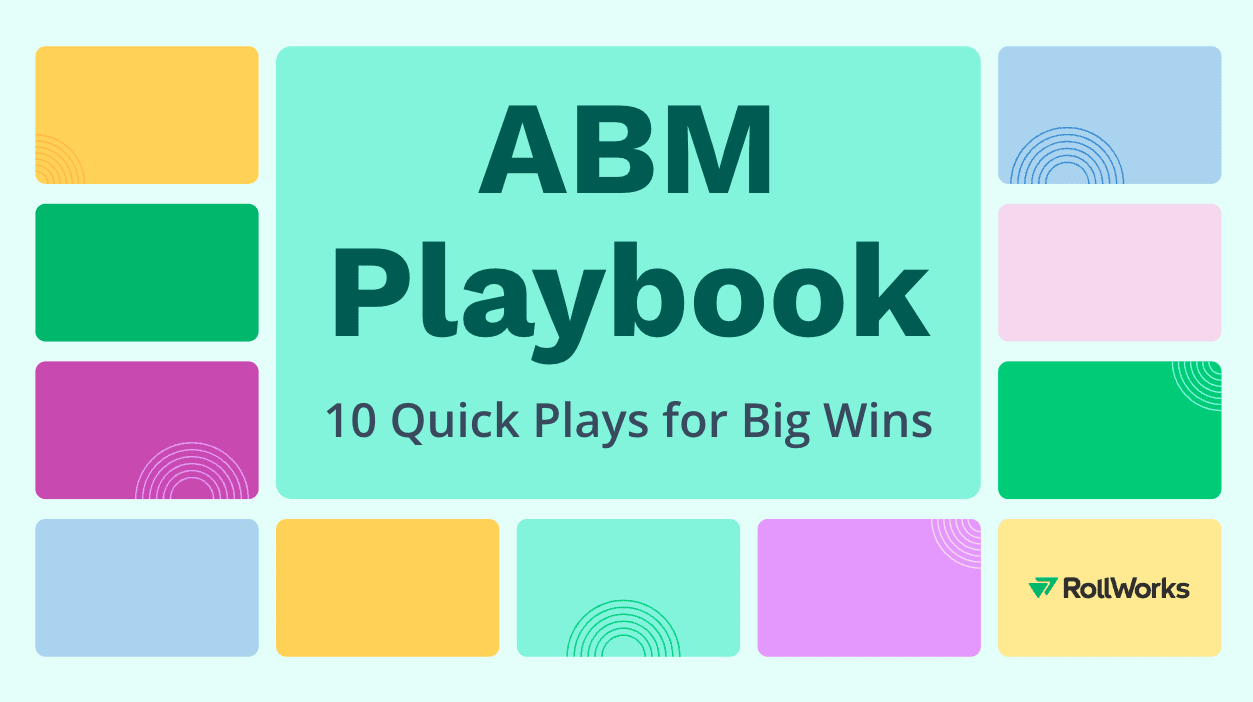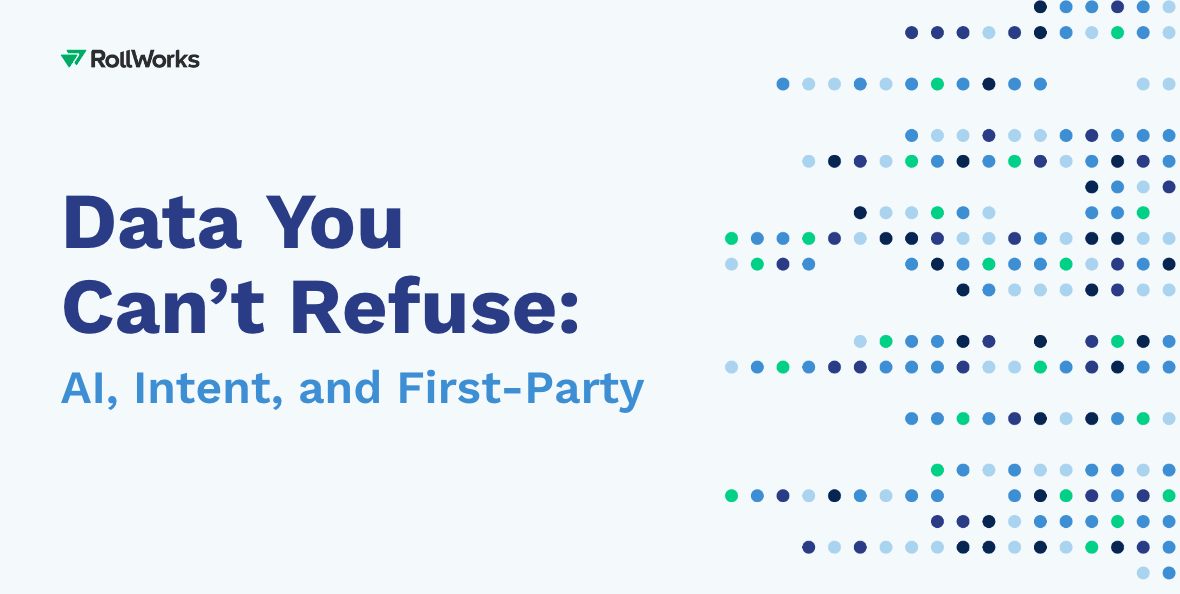With 70 percent of marketers implementing account-based marketing (ABM) this year (up from just 15% in 2020), B2Bs are embracing it for the long haul — especially for optimizing ad campaigns, providing better data collection and analysis, and reducing long sales cycles. Most importantly, it’s extremely beneficial for your company’s profitability — leadership marketing firm Alterra Group found that 97 percent of marketers believe ABM had higher ROI compared to other marketing strategies.
As ABM continues to grow and enhance businesses, it needs to keep up with the ever-evolving technologies, processes, and programs that shape the world. That’s where MarTech (a combination of “marketing” and “technology'') comes in. Originating back in 2011 with only 150 solutions, the industry is now worth $344.8 billion and comprises more than 8,000 vendors globally. Its quick ascent in popularity is a reason as old as time: competition.
If you don’t want to be left behind, you have to put your money where your mouth is and invest in MarTech platforms for your business. And not just for your marketing department, either. To fully reap the benefits of what MarTech can do for your bottom line, you need to implement it company-wide, especially within your sales team.
If ABM is the way to find customers and close deals, a MarTech stack is how you get in front of those customers in the first place — like a super powerful, data-driven elevator pitch. It’s the collection of tools, software, and techniques you need to execute your personalized digital marketing vision to scale your organization.
With MarTech, you can
- Focus on high-level, big-picture jobs instead of menial tasks
- Better understand who your customers are
- Implement management processes to improve efficiency organization-wide
- Strengthen internal communication and collaboration across all departments
- Create high-quality, personalized content that consistently meets your brand’s standards
Ultimately, a robust MarTech stack results in improved productivity, fewer errors, and, most importantly, more money across the organization.
But what exactly does a typical MarTech stack need to include to achieve all of these fabulous outcomes? Short answer: a lot. While you’re the best expert on your specific marketing needs and requirements — e.g. strategize first, implement tech second — the ideal stack should consist of everything from customer relationship management and marketing automation programs to direct mail and digital engagement platforms. By automating marketing processes, collecting and analyzing customer data, and customizing the overall customer experience, MarTech maximizes leads while simultaneously making your work life easier and more efficient.
MarTech stack pain points
Ready to get started with MarTech?
Or, ready to throw in the towel with MarTech because it’s proving to be more difficult than it’s worth?
Here are the top four biggest MarTech stack challenges and ways to face them:
1. Underutilized resources
The purpose of a MarTech stack is to automate your workflows and streamline your communication across the organization — not disrupt your processes. Though, on average, a typical enterprise has 120 different cloud services in its MarTech stack, it may only actually use a fraction of them, wasting time, money, and manpower on underused resources. (In fact, according to Gartner research, companies are using only 58 percent of their stack’s potential.)
By sitting down with your executives and managers and discussing both their current and future needs from your marketing department, you can clean up your MarTech stack and not over or under budget your next quarter or year’s spend.
2. Narrow-minded marketers
One of the quickest ways to sink any creative ship — especially one as fast-growing and versatile as the MarTech industry — is with people who are unwilling and unable to flow with the times. For MarTech to be successful at your company, everyone needs to support and understand it through proper training, inclusion in tech pilots and rollouts, and access to plenty of resources and documentation.
To nudge them in the right direction, show what MarTech can do and how much easier it can make their lives, both for the company as a whole and for their own position and department.
Trevelino/Keller found that companies who embrace and tailor their MarTech based on their specific industry, often find themselves with a huge advantage, setting them apart from the competition.
3. Privacy
As technology advances and better, more state-of-the-art smartphones and virtual assistants continue to crop up, so, too, does the likelihood of data misuse and leaks, including stolen information, ransomware, and vicious viruses that destroy our devices. For marketing professionals, the constant fear of data leaks gives you the added pressure to both protect your company and your leads and customers, ensuring them that their data will be safe with your organization.
Fortunately, by implementing customer data platforms (CDP), you can meet data compliance and security requirements while simultaneously leveraging the ever-growing need for fast, linkable, reliable data that MarTech provides.
4. Over-automation
Consider, for a moment, a time you were badgered via email or text by a brand making poor, irrelevant assumptions about your next purchase, using wrong or outdated information about you. Or, worst, sending way too many personalized messages to you. While automation can personalize your marketing efforts and make it easier to both communicate with and engage your audience about new products and services, it can also be extremely detrimental to your cause.
To combat over-automation, strike a healthy balance between AI and human marketers sending your customers messages and well-wishes. Instead of inundating them with ads and spam, for example, figure out a way to primarily send them the right message at the right time, like seasonal offerings or new customer discounts.
Multi-channel integrations
Fortunately, finding a place for MarTech in your ABM strategy will withstand most of these issues. With ABM platforms like RollWorks, aligning marketing and sales through multi-channel experiences and integrations has never been easier. From insights and analytics to direct mail and digital engagement, these marketing innovations help you to create personalized content using one easy-to-use, convenient platform.
Check out a few of the top MarTech options, including RollWorks’ partners, and how they can help you connect the dots of your multi-channel marketing plays. When you unlock the power of your entire stack with integrations, your ABM strategy becomes that much easier to implement.
CRM and Marketing Automation
- Using HubSpot data, you can create an efficient end-to-end ABM program with RollWorks — identifying target accounts, engaging through digital marketing, and measuring impact to grow your business.
- Through personalized ad experience, discover and engage your niche customers with Marketo and RollWorks.
B2B Marketing
- By connecting LinkedIn with RollWorks, you can identify and connect with target accounts using well-executed account-based advertising, all from one single platform.
Insights and Analytics
- With Google Analytics and RollWorks, you can view firmographics and web traffic patterns to better understand your client base.
Digital Engagement and Personalization
- With RollWorks’ account data and full-funnel insights, you can create captivating, personalized content experiences — like landing pages — with Uberflip.
- Folloze and RollWorks provide scalable, relevant experiences to your customers and prospects.
- Supercharge your digital engagement experience with Hushly and RollWorks, resulting in higher conversions and higher quality leads.
Email Signature Marketing
- Target your niche customers all from one place with Opensense and RollWorks, seamlessly consolidating campaign messages across numerous display and email channels, including email signatures that increase lift across all programs.
Direct Mail
- Automate direct mail to deliver relevant, personalized content seamlessly with PFL and RollWorks.
- With RollWorks’ robust data and Sendoso’s sending platform, engage buyers and drive revenue with personalized gifts.
- Improve your gifting strategy with Alyce’s AI power and RollWork’s account data.
Partner Marketing
- Use Crossbeam to identify customers and prospects you share with partners for an enhanced go-to-market motion.
Sales Outreach
- Drive more growth and close more deals with tools like Outreach's sales engagement platform.
- Keep customers engaged externally and streamline communication internally using tools like Salesloft.
Chat
- Connect and engage with every website customer — day or night — using tools like Drift’s AI chatbots. Seamlessly connect marketing and sales actions across the entire web experience.
Looking at this list, you can see that supporting ABM strategy with your MarTech stack effectively automates your marketing processes while simplifying creative communication across all your sales and marketing teams. The right MarTech stack is the easy way to collect and analyze data to create personalized content to get more leads — and close more deals.
Ultimately, you need an ABM platform that naturally knows how to engage the right people, integrate with the right applications, and drive the best, most profitable deals. For real customer examples on how others approach MarTech, check out our MarTech Madness eBook to master your own strategy.































